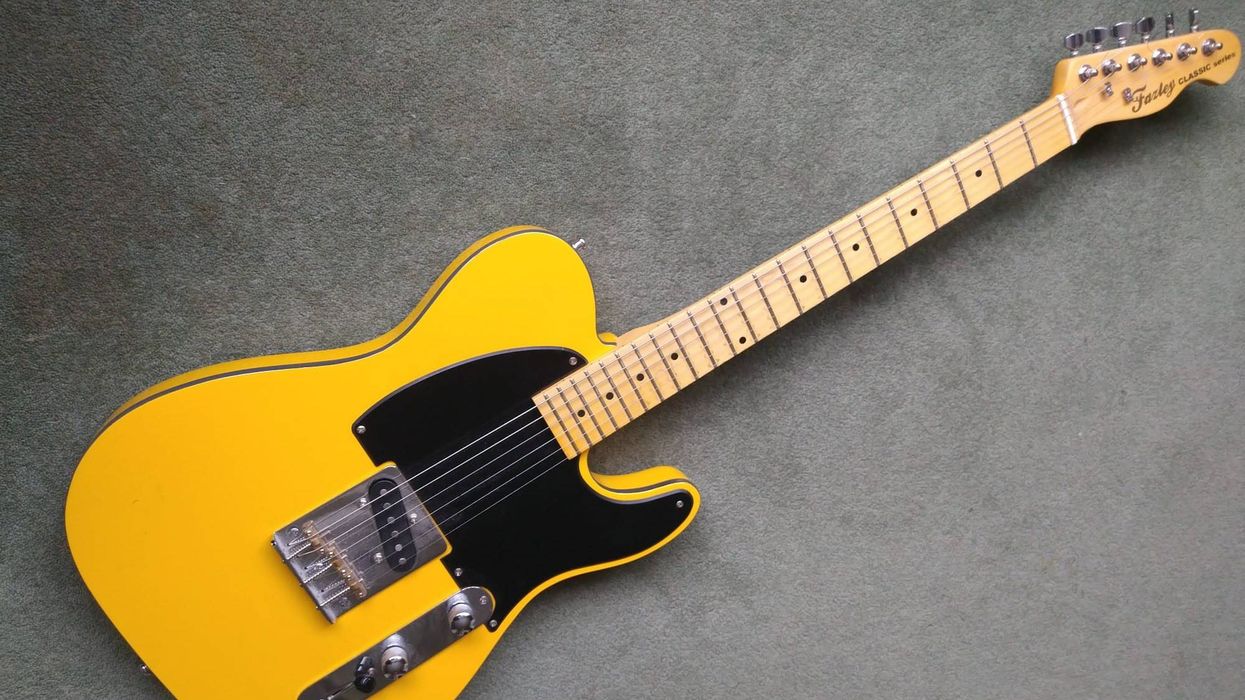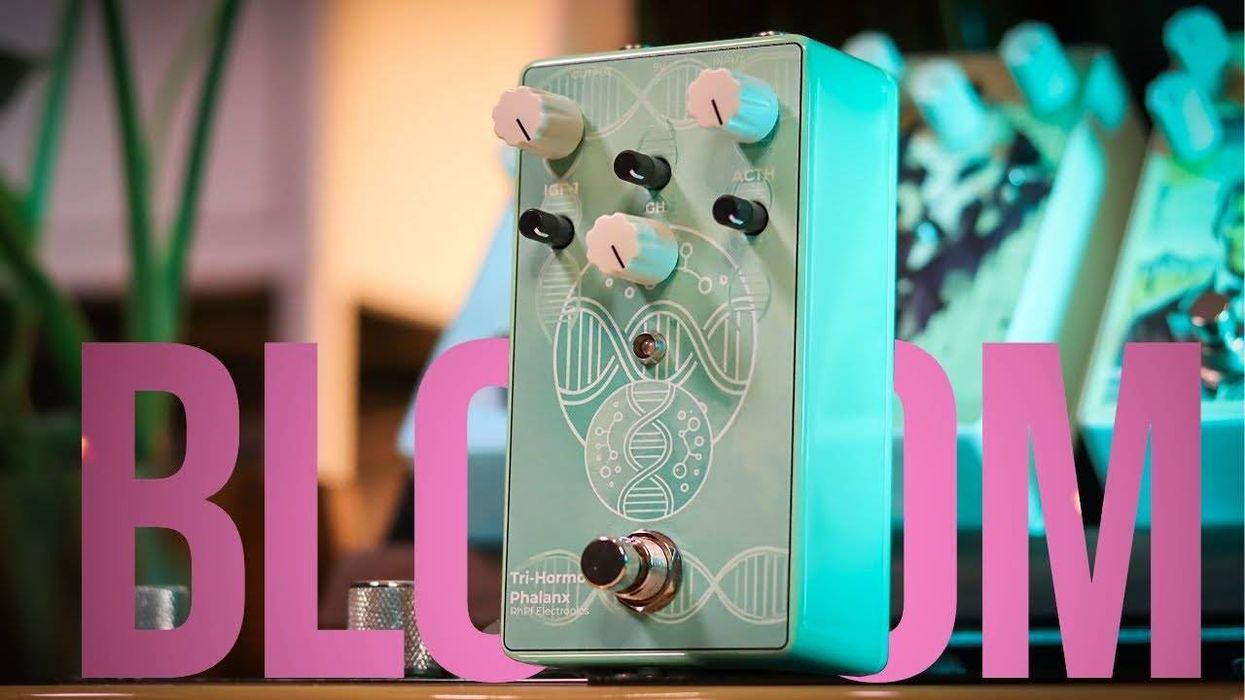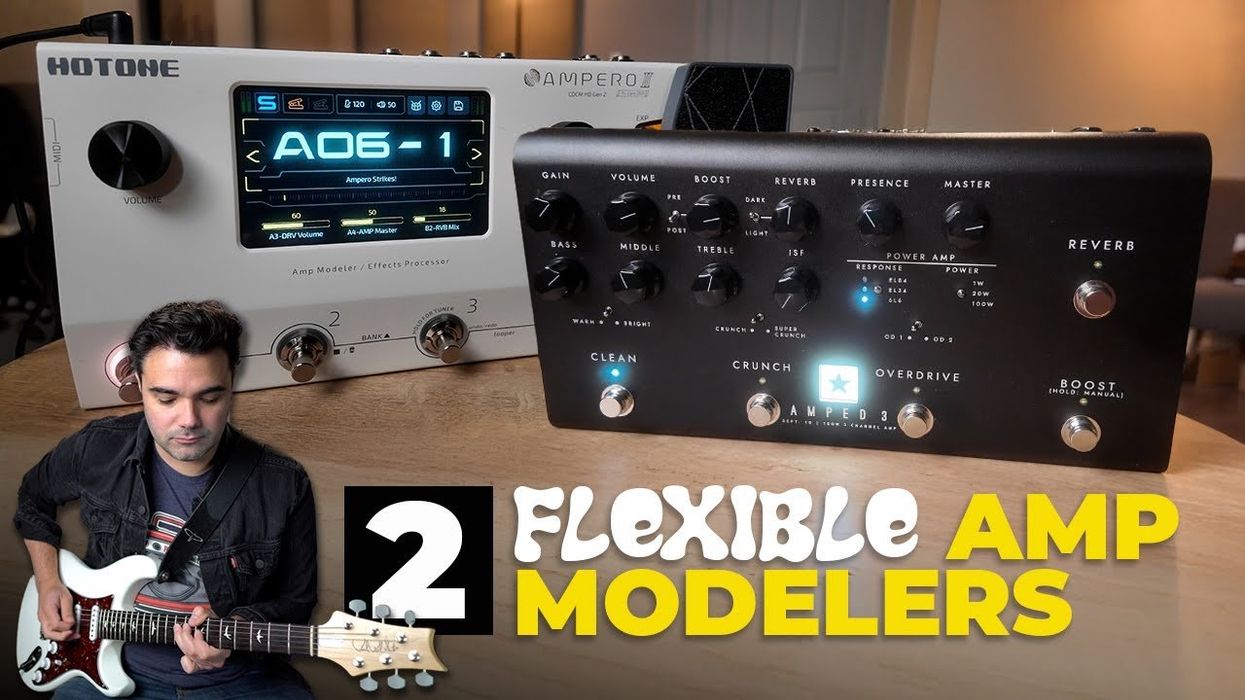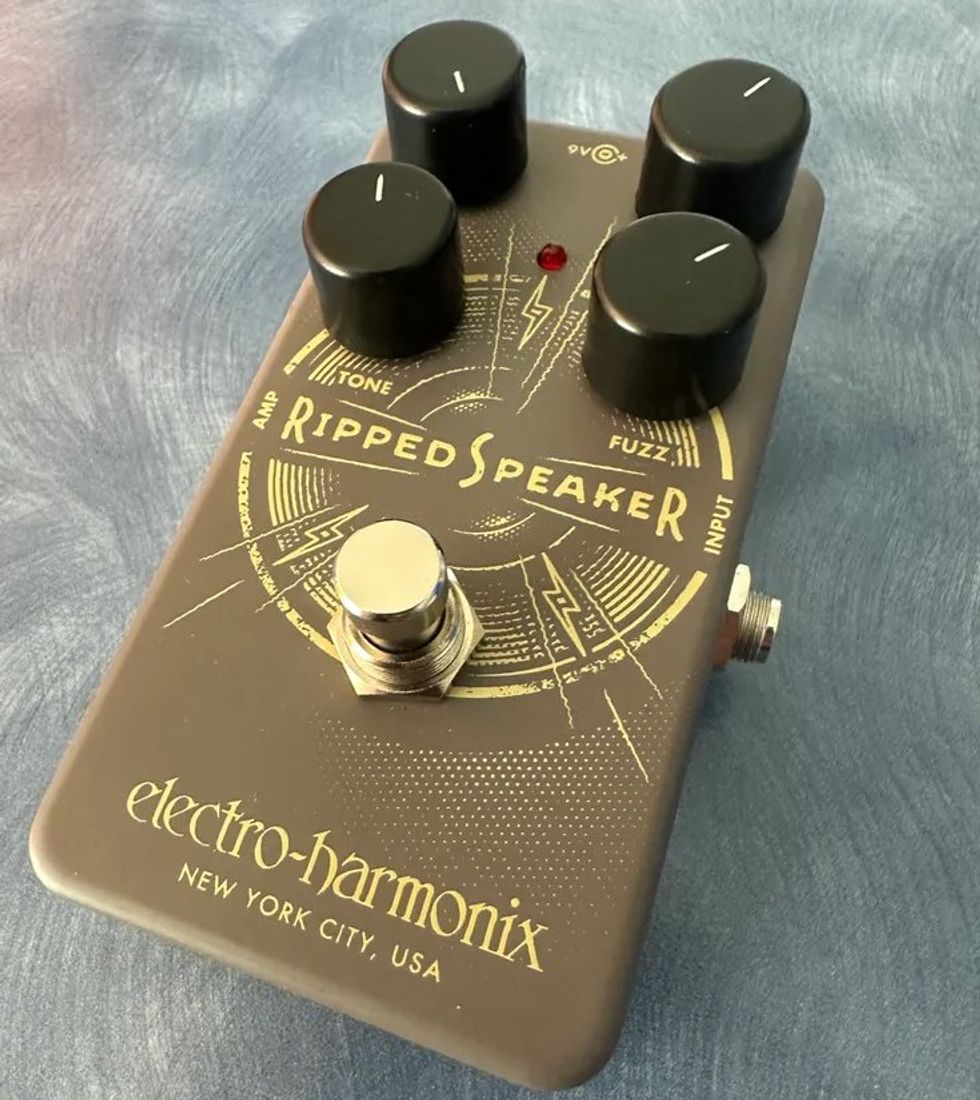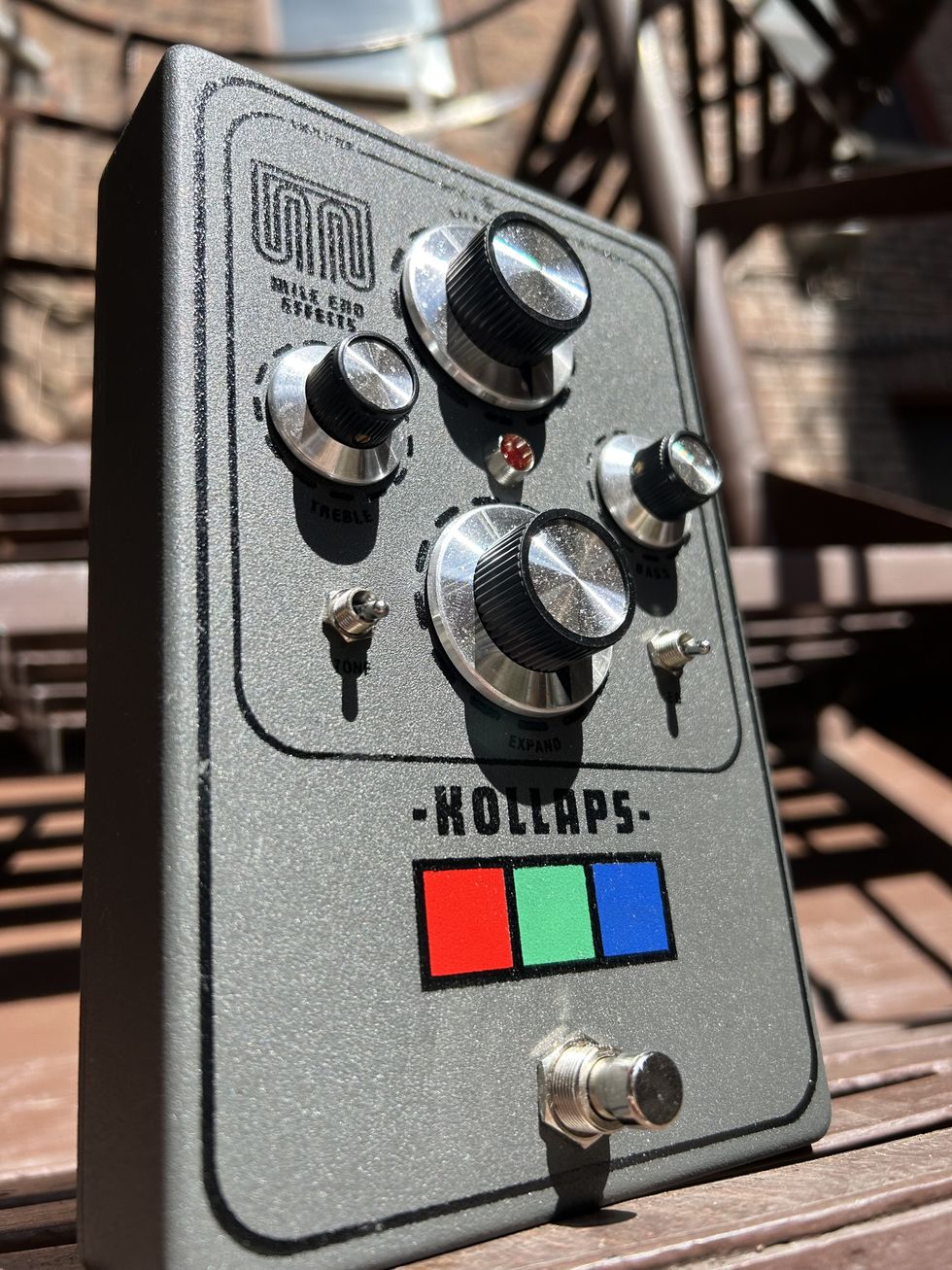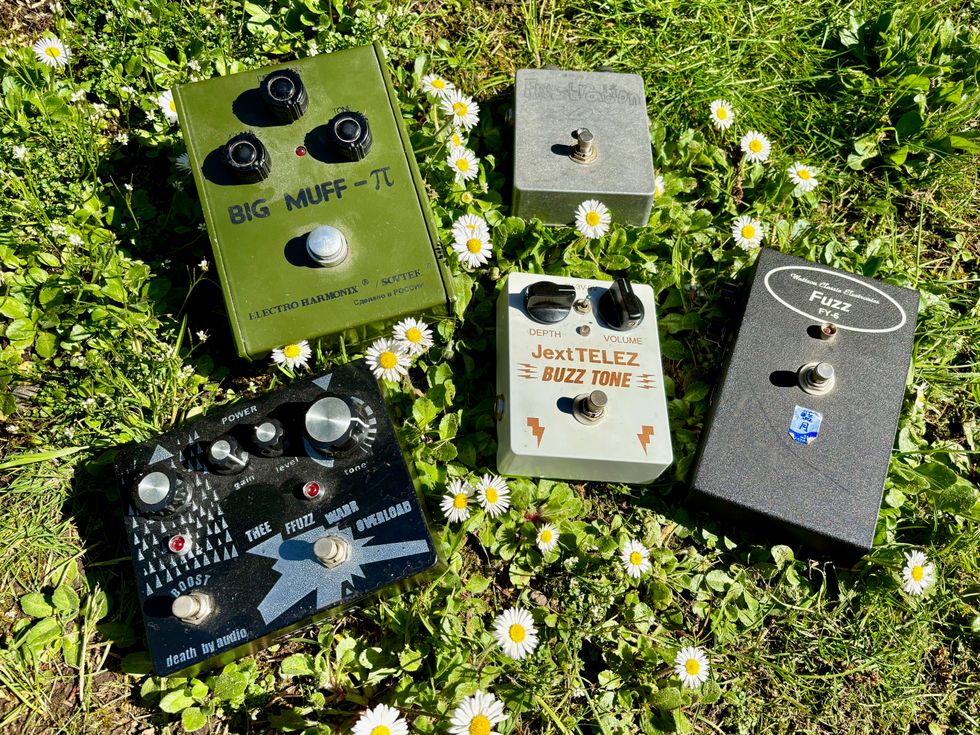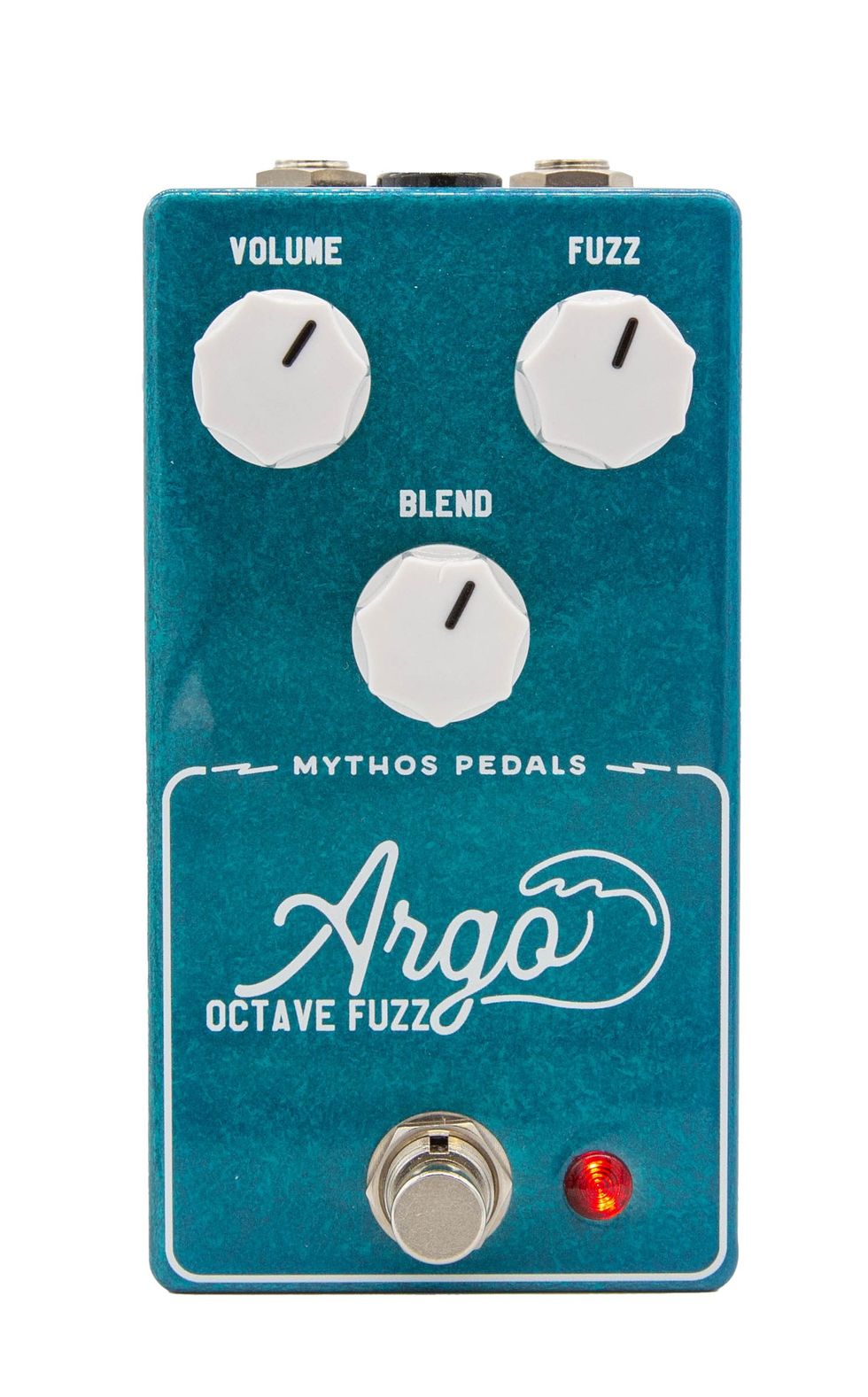Eau Claire, WI (February 10, 2015) -- Gears is many things; an overdrive, sub octave generator, and resonant filter and expression pedal input. What it means for the player is a device that allows you to emulate many familiar synth sounds, as well as create brand new ones.
Features:
- The overdrive is a fixed sound that can be mixed from silent to LOUD - just like the OG Robot Devil.
- This signal is fed into a clock divider, which puts out a square wave (or two) we can mix into the output.
- The audio then travels on to the aggressive filter section. There's also a drive control allowing you to play nice with the filter, or just slam audio up against it.
- The filter also sneaks into self oscillation, for a little bit of extra noise, if you so desire.
- The expression pedal input allows foot control over the "Freq" knob and is the most magic trick in this new box.
- Electronic “wubs" familiar "wahs" and plenty of other new sounds are effortlessly dialed in and modulated with your foot.
$225 retail
Watch the company's video demo:
For more information:
Dwarfcraft


